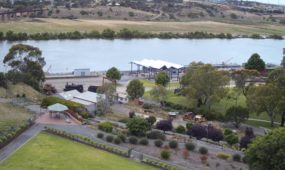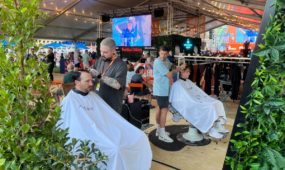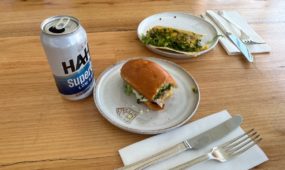Bushranger on an ostrich rides again
Tourism
FISHERMAN Henry Carmichael no doubt got the shock of his life when he pulled in to shore after a day on Lake Albert only to be held up at gunpoint by a bearded child draped in jewels sitting atop an ostrich.

Sign up to receive notifications about new stories in this category.
Thank you for subscribing to story notifications.
The incident near the town of Meningie on September 17, 1899 was among more than a dozen armed holdups staged by legendary South Australian bushranger John Francis Peggotty – the Birdman of the Coorong.
But it was to be his last.
The shirtless Peggotty fired twice at Carmichael but missed both times. He fled when Carmichael reached for his rifle and took aim at the diminutive bandit in a bid to claim the bounty on his head.
Carmichael set off after Peggotty but was no match for the ostrich, which excelled in the soft sand and vast dunes of the Coorong, about 150km southeast of Adelaide. So he instead took aim from a distance and fired several shots, hitting the ostrich and Peggotty before they disappeared on the other side of a distant dune.
When Carmichael finally clambered up the dune he found the dead ostrich, a broken gold chain worn by Peggotty and a trail of blood leading into the scrub.
The eccentric bushranger was never seen again and his stash of gold chains and jewels are said to be buried deep in the Coorong.
Peggotty’s previous robberies included two murders and the theft of more than a million dollars worth of cash and jewels, which he proudly draped across his body.
But despite only being about the size of a seven-year-old boy, Peggotty was not a child at all.
Born prematurely in County Limerick, Ireland, in 1864, the under-developed Peggotty spent some time in South Africa, where he learned to ride his getaway ostrich, before moving to Australia.
After settling in Adelaide he recruited a gang of boys and together they slid down chimneys and stole jewellery, which Peggotty had a fetish for wearing while half naked.
The gang disbanded and Peggotty was next seen draped in jewellery and brandishing pistols while perched on the back of an ostrich around the town of Meningie.
The small town has long been a popular toilet stop for people travelling from Adelaide to the Coorong National Park or to the seaside holiday towns of Robe and Kingston.
It sits beside Lake Albert, one of the lower lakes fed by the River Murray, and is a few kilometres east of the Coorong, a 140km long protected lagoon ecosystem surrounded by vast sand dunes.
The Birdman of the Coorong has been resurrected through a statue of Peggotty’s saddled ostrich on the Meningie foreshore and has become a popular tourist stop for hundreds of passers-by who pose for photos while perched in the saddle.
The project was undertaken to boost tourism in the town and raise community spirits after it was hit hard by the Millennium Drought, which gripped much of Australia from 2006 to 2010.
During the drought, the water level in Lake Albert dropped significantly, leading to a spike in salinity, which devastated the local fishing, dairy and tourism industries.
Meningie Progress Association member Denice Mason said the legend of John Francis Peggotty came to light through a decades-old magazine article titled “Birdman of the Coorong” that was found when the town put out a call for local stories to help generate interest in the area.
The association then did some research to confirm parts of the story such as the existence of a bushranger named John Francis and the presence of ostriches in the Coorong from the late 1870s. The exotic, flightless birds were farmed locally to provide feathers for the fashion industry before being set loose because of a failed market. Sightings of the wild birds continued in the area until at least the 1950s.
“When we lost the water out of the lake, Meningie was becoming a dying town and tourism was probably the only thing that could get it back on the map but without water we had to find some other ways,” Mason said.
“The number of people who stop and take a photo here is amazing really.”
Replica artefacts such as Peggotty’s pistol, a broken gold chain and a bullet fired by Carmicheal in the pursuit are dotted around businesses in the town to help generate interest in the legend.
Mason said the location of the steel statue by the water’s edge was also a chance to show off Lake Albert’s beauty.
“This time of year there are these stunning sunsets over the water so it makes for great photos … sometimes you see five or six people trying to pile on there,” she said.
“Meningie is famous for the toilets in the main street – people then get back in their cars and move on so the main driver was trying to get people to stop a little bit longer and buy a cup of coffee or whatever and I think that’s working.”
Other quirky local stories will be rolled out in the future as part of a history trail in the area.
Mason said as well as helping to generate interest in the town, the ostrich statue was also playing a role in lifting the spirits of the community.
“Don’t take it all too seriously I guess, is part of the message,” she said.
Meningie will mark its 150th anniversary as a settlement with a weekend of celebrations on October 29 and 30.
Jump to next article



